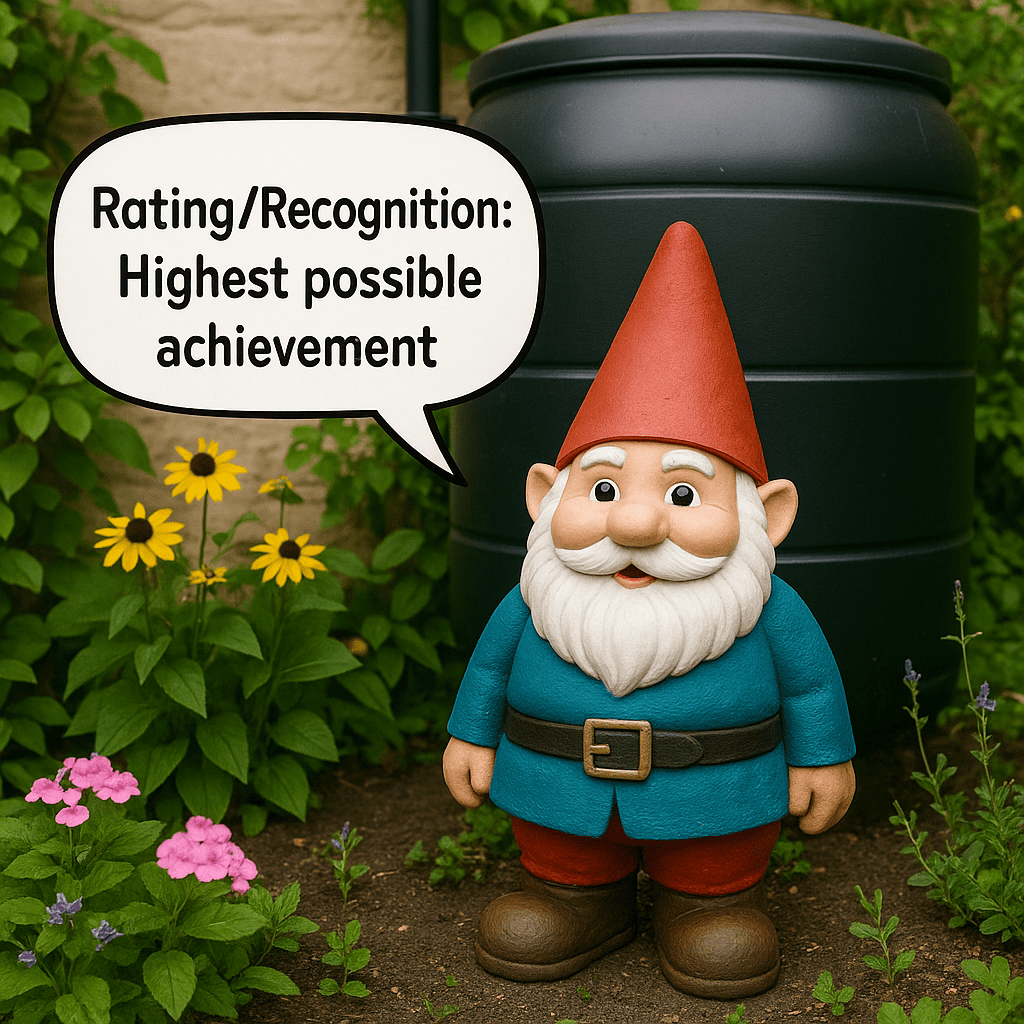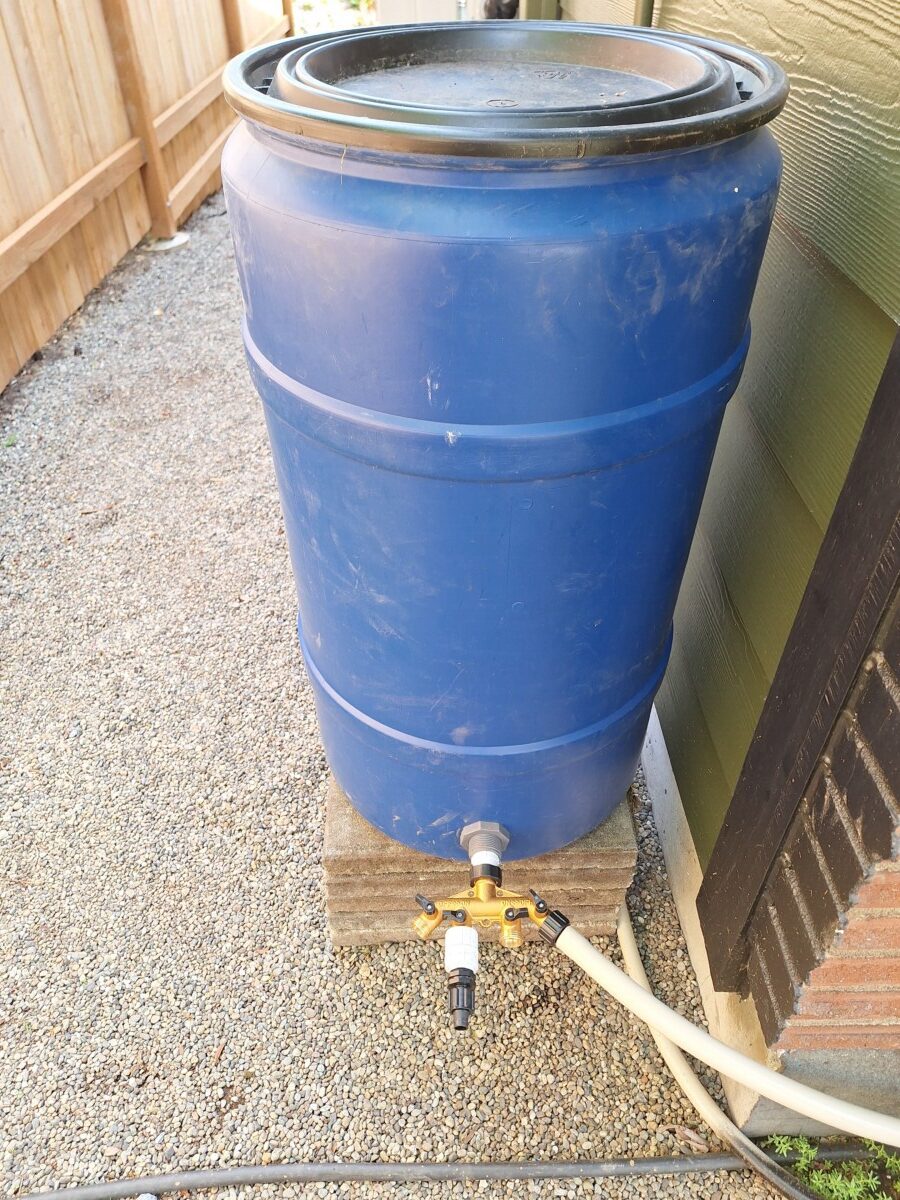
Title: This project is great because we accomplished everything.
Subject: Roof to plants, drainage included

Lot size: 1000 square feet
Roof area: 1000 sq ft

Customer played an active role in design and installation.
Planned for effective overflow, low-maintenance, and proper flow rates to sewer system.
After a lot of thought and careful planning our project has achieved all the goals I set out for. It’s beautified our landscape, increased our property value, improved our drainage, and introduced new landscape features that I didn’t know possible.
This North Seattle project demonstrates innovative drainage and water management for urban homeowners through top-tier certification, partnership with Rain Wise, and effective results in water savings, stormwater management, and landscape improvement.
Tagline: 100% Roof-to-Plant Water Management in Action